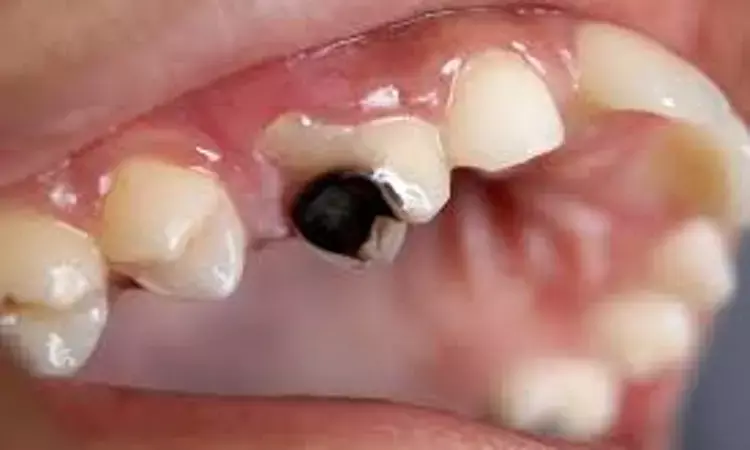- Home
- Medical news & Guidelines
- Anesthesiology
- Cardiology and CTVS
- Critical Care
- Dentistry
- Dermatology
- Diabetes and Endocrinology
- ENT
- Gastroenterology
- Medicine
- Nephrology
- Neurology
- Obstretics-Gynaecology
- Oncology
- Ophthalmology
- Orthopaedics
- Pediatrics-Neonatology
- Psychiatry
- Pulmonology
- Radiology
- Surgery
- Urology
- Laboratory Medicine
- Diet
- Nursing
- Paramedical
- Physiotherapy
- Health news
- Fact Check
- Bone Health Fact Check
- Brain Health Fact Check
- Cancer Related Fact Check
- Child Care Fact Check
- Dental and oral health fact check
- Diabetes and metabolic health fact check
- Diet and Nutrition Fact Check
- Eye and ENT Care Fact Check
- Fitness fact check
- Gut health fact check
- Heart health fact check
- Kidney health fact check
- Medical education fact check
- Men's health fact check
- Respiratory fact check
- Skin and hair care fact check
- Vaccine and Immunization fact check
- Women's health fact check
- AYUSH
- State News
- Andaman and Nicobar Islands
- Andhra Pradesh
- Arunachal Pradesh
- Assam
- Bihar
- Chandigarh
- Chattisgarh
- Dadra and Nagar Haveli
- Daman and Diu
- Delhi
- Goa
- Gujarat
- Haryana
- Himachal Pradesh
- Jammu & Kashmir
- Jharkhand
- Karnataka
- Kerala
- Ladakh
- Lakshadweep
- Madhya Pradesh
- Maharashtra
- Manipur
- Meghalaya
- Mizoram
- Nagaland
- Odisha
- Puducherry
- Punjab
- Rajasthan
- Sikkim
- Tamil Nadu
- Telangana
- Tripura
- Uttar Pradesh
- Uttrakhand
- West Bengal
- Medical Education
- Industry
Difference of Dental caries prevalence among diabetic and non-diabetic children insignificant: study

Prevalence between the diabetic and non-diabetic children is insignificant, according to a recent study published in The Saudi Dental Journal.
The aim of this study was to compare the prevalence of dental caries among groups of 6–12-year-old children with and without Type 1 diabetes mellitus (T1DM) in Riyadh, Saudi Arabia, taking into account oral health behaviour, diet, and salivary parameters.
The study was designed as a comparative study of dental caries experience between T1DM and non-diabetic groups of children. The total sample size of 209 participants consisted of 69 diabetics and 140 non-diabetic children. Oral hygiene, diet and socioeconomicThe Saudi Dental Journal. status were collected using a pre-tested questionnaire. Caries was recorded in terms of decayed and filled permanent and primary teeth (DFT/dft). Salivary microbial counts and pH levels were recorded using Caries Risk Test (CRT) kit. Student's t-test, the chi-squared test, linear regression and one-way analysis of variance were performed P-value of 0.05 considered significant.
The Results of the study are:
The mean dft scores for the diabetic and non-diabetic groups were 3.32 ± 0.78 and 3.28 ± 0.71 (mean ± SD), respectively (p = 0.458). The mean DFT scores for the diabetic and non-diabetic groups were 1.62 ± 0.65 and 1.96 ± 0.65, respectively (p = 0.681). Diabetic children visited dentists more often than non-diabetic children did (p = 0.04), and had lower consumption of both sweets (p = 0.003) and flavoured milk (p = 0.002) than the non-diabetic group. Furthermore, analysis showed that the diabetic children had medium oral pH levels (pH = 4.5–5.5), whereas the non-diabetic children tended to have high (pH ≥ 6.0) oral pH; this difference was statistically significant (p = 0.01). In addition, the diabetic group had higher Lactobacillus levels than the non-diabetic group (p = 0.04).
Thus, the researchers concluded that the difference in caries prevalence between the diabetic and non-diabetic children was not statistically significant. The CRT analysis revealed a higher frequency of "critical" pH values (pH = 4.5–5.5) and higher Lactobacillus counts in diabetic children than in non-diabetic children, which indicated a higher caries risk in the former group.
Reference:
Dental caries prevalence among Type 1 diabetes mellitus (T1DM) 6- to 12-year-old children in Riyadh, Kingdom of Saudi Arabia compared to non-diabetic children by Abid HamoudAl-Badr et al. published in The Saudi Dental Journal.
https://doi.org/10.1016/j.sdentj.2020.03.005
Dr. Shravani Dali has completed her BDS from Pravara institute of medical sciences, loni. Following which she extensively worked in the healthcare sector for 2+ years. She has been actively involved in writing blogs in field of health and wellness. Currently she is pursuing her Masters of public health-health administration from Tata institute of social sciences. She can be contacted at editorial@medicaldialogues.in.
Dr Kamal Kant Kohli-MBBS, DTCD- a chest specialist with more than 30 years of practice and a flair for writing clinical articles, Dr Kamal Kant Kohli joined Medical Dialogues as a Chief Editor of Medical News. Besides writing articles, as an editor, he proofreads and verifies all the medical content published on Medical Dialogues including those coming from journals, studies,medical conferences,guidelines etc. Email: drkohli@medicaldialogues.in. Contact no. 011-43720751


